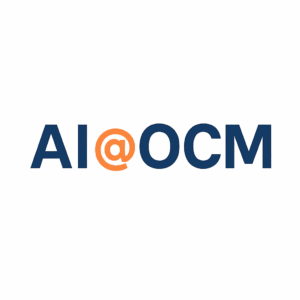Organizational Change Management (OCM) has significantly evolved over the years, transforming from a project-focused discipline to a fundamental organizational capability. This shift reflects a deeper understanding of the critical role OCM plays in enabling businesses to adapt, innovate, and thrive in a dynamic environment. In this article, we will explore the differences between OCM engaged in specific projects and OCM as an organization-wide capability embedded as a core value.
OCM in Projects: Tactical and Context-Specific
Traditionally, OCM has been viewed primarily as a tool for managing the human aspects of specific projects. This approach is tactical and context-specific, focusing on particular objectives and outcomes.
Key Characteristics of Project-Based OCM:
- Scope and Timeframe: OCM activities in this context are confined to the lifecycle of a project. They begin and end with the project, focusing on immediate goals such as user adoption, training, and communication specific to the project.
- Change Agents and Roles: In project-based OCM, change agents are usually appointed for the duration of the project. Their primary role is to manage stakeholder engagement, communicate project impacts, and facilitate training and support.
- Tools and Techniques: The OCM toolkit in project environments typically includes stakeholder analysis, communication plans, resistance management strategies, and training programs. These tools are customized to address the unique challenges and objectives of each project.
- Measurement and Success Criteria: Success in this model is measured by specific project outcomes: timely completion, budget adherence, user adoption rates, and minimal resistance or disruption.
OCM as an Organizational Capability: Strategic and Holistic
In contrast, embedding OCM as a core organizational value represents a strategic and holistic approach. This perspective recognizes that change is not an intermittent challenge but a continuous aspect of organizational life.
Key Characteristics of OCM as an Organizational Capability:
- Organizational Culture and Values: When OCM is ingrained as a core value, it becomes part of the organizational culture. Change readiness, flexibility, and adaptability are embedded in the company’s DNA, influencing behavior and attitudes at all levels.
- Leadership and Governance: In this model, leadership plays a crucial role in championing and modeling change-friendly behaviors. Governance structures are established to ensure that change management principles are integrated into all business processes.
- Capacity Building and Competency Development: Building change management competencies across the organization is a priority. This involves training employees at all levels in basic OCM principles and creating a pool of internal change champions.
- Sustainable Practices and Continuous Improvement: OCM as an organizational capability focuses on long-term sustainability. It involves establishing ongoing practices for monitoring change effectiveness, learning from experiences, and continuously improving change management processes.
Comparing the Two Approaches
While both approaches are valid and valuable, they serve different purposes and deliver different outcomes. Project-based OCM is essential for the successful execution of specific initiatives. However, it is often reactive and limited in scope. On the other hand, OCM as an organizational capability is proactive, offering a comprehensive framework for managing change across the organization. It fosters a culture of agility and resilience, which is critical in today’s fast-paced business environment.
Transitioning from Project-Based OCM to an Organizational Capability
- Leadership Commitment: The transition begins with a commitment from top leadership to embed change management into the organizational culture.
- Stakeholder Engagement: Engaging stakeholders across the organization in understanding the value of OCM is crucial. This includes educating them about the benefits of a holistic approach to managing change.
- Capacity Building: Developing internal capabilities through training and development programs ensures that employees at all levels have the skills to manage and adapt to change.
- Integrating OCM into Business Processes: Embedding OCM principles into everyday business processes and decision-making ensures that change management is not an afterthought but a key consideration in all initiatives.
Conclusion
The evolution of OCM from a project-focused discipline to an integral part of organizational culture marks a significant shift in how businesses approach change. While project-based OCM remains important for
managing specific initiatives, embedding OCM as a core organizational value offers a more strategic and sustainable approach to managing change. By cultivating a culture that embraces change, organizations can enhance their agility, resilience, and ability to innovate. This strategic integration of OCM into the fabric of an organization not only prepares it for the challenges of today but also equips it to seize the opportunities of tomorrow. As businesses continue to navigate an ever-changing landscape, the role of OCM as an organizational capability will become increasingly vital, providing a strong foundation for growth and success in the dynamic world of business.






